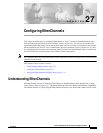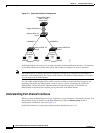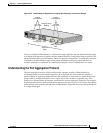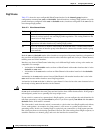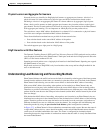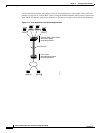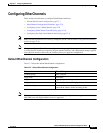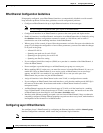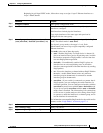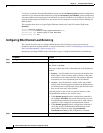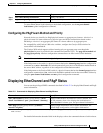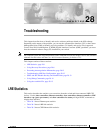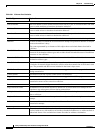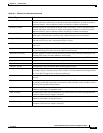
27-8
Catalyst 2950 Desktop Switch Software Configuration Guide
78-14982-01
Chapter 27 Configuring EtherChannels
Configuring EtherChannels
EtherChannel Configuration Guidelines
If improperly configured, some EtherChannel interfaces are automatically disabled to avoid network
loops and other problems. Follow these guidelines to avoid configuration problems:
• Configure an EtherChannel with up to eight Ethernet interfaces of the same type.
Note Do not configure a GigaStack GBIC port as part of an EtherChannel.
• Configure all interfaces in an EtherChannel to operate at the same speeds and duplex modes.
• Enable all interfaces in an EtherChannel. An interface in an EtherChannel that is disabled by using
the shutdown interface configuration command is treated as a link failure, and its traffic is
transferred to one of the remaining interfaces in the EtherChannel.
• When a group is first created, all ports follow the parameters set for the first port to be added to the
group. If you change the configuration of one of these parameters, you must also make the changes
to all ports in the group:
–
Allowed-VLAN list
–
Spanning-tree path cost for each VLAN
–
Spanning-tree port priority for each VLAN
–
Spanning-tree Port Fast setting
• If you configure Switch Port Analyzer (SPAN) on a port that is a member of the EtherChannel, it
leaves the EtherChannel.
• Do not configure a port that belongs to an EtherChannel port group as a secure port.
• Before enabling 802.1X on the port, you must first remove it from the EtherChannel. If you try to
enable 802.1X on an EtherChannel or on an active port in an EtherChannel, an error message
appears, and 802.1X is not enabled. If you enable 802.1X on a not-yet active port of an
EtherChannel, the port does not join the EtherChannel.
• Assign all interfaces in the EtherChannel to the same VLAN, or configure them as trunks.
• If you configure an EtherChannel from trunk interfaces, verify that the trunking mode (802.1Q) is
the same on all the trunks. Inconsistent trunk modes on EtherChannel interfaces can have
unexpected results.
• An EtherChannel supports the same allowed range of VLANs on all the interfaces in a trunking
Layer 2 EtherChannel. If the allowed range of VLANs is not the same, the interfaces do not form
an EtherChannel even when PAgP is set to the auto or desirable mode.
• Interfaces with different spanning-tree path costs can form an EtherChannel if they are otherwise
compatibly configured. Setting different spanning-tree path costs does not, by itself, make interfaces
incompatible for the formation of an EtherChannel.
Configuring Layer 2 EtherChannels
You configure Layer 2 EtherChannels by configuring the Ethernet interfaces with the channel-group
interface configuration command, which creates the port-channel logical interface.
Note Layer 2 interfaces must be connected and functioning for IOS to create port-channel interfaces.




